The sharply defined reverse reveals this florin die cap to be counterfeit.
 Every week, NGC receives numerous counterfeit and altered coins, from 1893-S Morgan Dollars with added "S" mintmarks to fake Chinese "Junk" Dollar. The quality and type of these spurious coins is incredibly diverse and, as a result, it is rare that NGC ‘s graders are truly surprised by a counterfeit. Once in a while, however, something really unusual is submitted.
Every week, NGC receives numerous counterfeit and altered coins, from 1893-S Morgan Dollars with added "S" mintmarks to fake Chinese "Junk" Dollar. The quality and type of these spurious coins is incredibly diverse and, as a result, it is rare that NGC ‘s graders are truly surprised by a counterfeit. Once in a while, however, something really unusual is submitted.
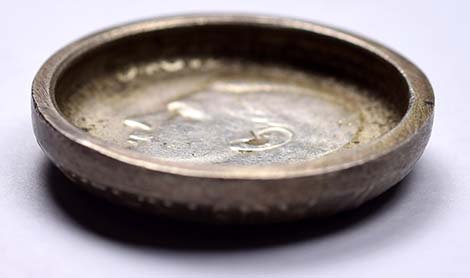
Australia 1944 Florin received by NGC
 This Australia 1944 Florin resembles a bottlecap. This unusual shape occurs when a coin sticks to a die and is then repeatedly struck onto the planchets that are subsequently loaded. As it continues to be struck, the coin started to wrap around the die. Numismatists call this mint error a "die cap."
This Australia 1944 Florin resembles a bottlecap. This unusual shape occurs when a coin sticks to a die and is then repeatedly struck onto the planchets that are subsequently loaded. As it continues to be struck, the coin started to wrap around the die. Numismatists call this mint error a "die cap."
 Die caps are quite popular among error coin enthusiasts. This one, however, turned out to be a regular Australia 1944 Florin that had been intentionally damaged to resemble a die cap error.
Die caps are quite popular among error coin enthusiasts. This one, however, turned out to be a regular Australia 1944 Florin that had been intentionally damaged to resemble a die cap error.
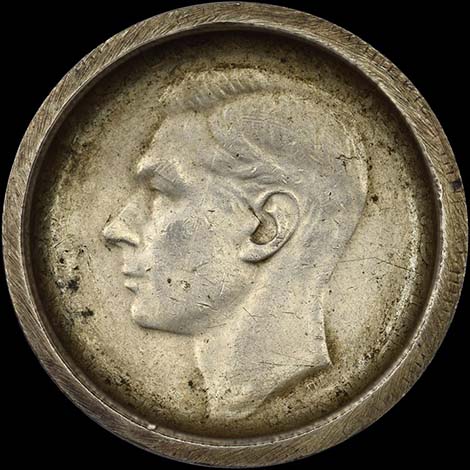
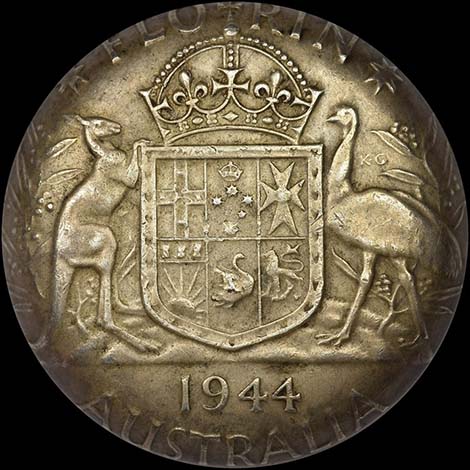
This Australia 1944 Florin has been damaged to resemble a mint error
 There are a few issues that led NGC's graders to determine that this die cap was spurious. Most notable are the tiny scratches around the edge of the coin. These are tool marks that were left behind by the counterfeit's attempts to bend this coin and make it appear to be an error.
There are a few issues that led NGC's graders to determine that this die cap was spurious. Most notable are the tiny scratches around the edge of the coin. These are tool marks that were left behind by the counterfeit's attempts to bend this coin and make it appear to be an error.
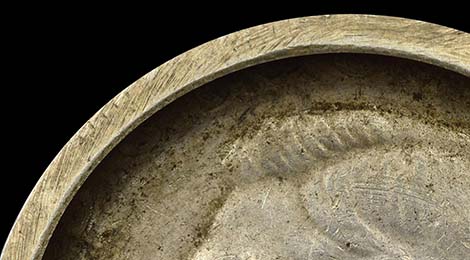
Tool marks left by the counterfeiter are easily seen on the edge of the coin.
 In addition to the tool marks, the reverse of this coin is inconsistent with the reverse on legitimate die caps. On a genuine die cap, the reverse would be flattened and distorted because this error occurs when an already-struck coin is repeatedly struck onto subsequently planchets. The reverse of this florin, however, is sharply defined and properly proportioned. This is a dead giveaway that this piece is not an authentic die cap.
In addition to the tool marks, the reverse of this coin is inconsistent with the reverse on legitimate die caps. On a genuine die cap, the reverse would be flattened and distorted because this error occurs when an already-struck coin is repeatedly struck onto subsequently planchets. The reverse of this florin, however, is sharply defined and properly proportioned. This is a dead giveaway that this piece is not an authentic die cap.
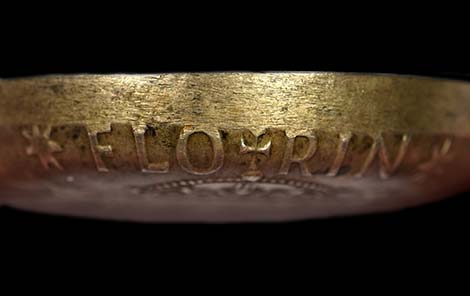
Lack of metal flow is evident on the edge of the fake 1944 Australia Florin die cap.
 Lastly, the design elements on a genuine die cap would go all the way to the rim of the coin, becoming stretched in the periphery as the coin wraps around the die. On this coin the details simply stop before the rim.
Lastly, the design elements on a genuine die cap would go all the way to the rim of the coin, becoming stretched in the periphery as the coin wraps around the die. On this coin the details simply stop before the rim.
 This coin illustrates the fact that virtually anything can—and will—be targeted by a counterfeiter at some point. To avoid getting swindled, it is very important to be familiar with authentic pieces and, for mint errors in particularly, the minting process. If in doubt, consider coins graded and encapsulated by NGC—they are guaranteed to be genuine.
This coin illustrates the fact that virtually anything can—and will—be targeted by a counterfeiter at some point. To avoid getting swindled, it is very important to be familiar with authentic pieces and, for mint errors in particularly, the minting process. If in doubt, consider coins graded and encapsulated by NGC—they are guaranteed to be genuine.